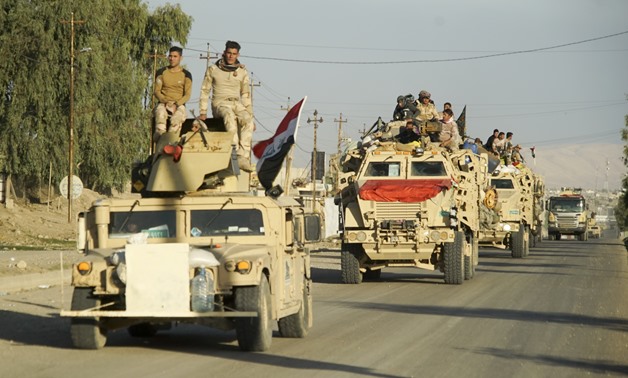
Iraqi Army Convoy in Mosul Wikipedia
CAIRO - 10 May 2017: A new phase of combat between Iraqi forces and the Islamic State (IS) has broken out, according to UN News Centre. The combat is the latest in a series of fights that have been occurring since October 2016 as part of military efforts of liberating the second biggest Iraqi city, Mosul.
As part of the largest operation to liberate the second largest Iraqi city, Mosul, which commenced in October 2016, a new wave of conflict between Iraqi forces and the Islamic State (IS) group broke out. Iraqi troops, Kurdish Peshmerga forces, and a Shia paramilitary force in collaboration with the US-led coalition, are the contingents leading the battle to liberate Mosul.
The United Nations and members of the international humanitarian community are expressing concern about thousands of civilians still living in the area, caught in the middle of the combat between the fighters. In Mosul, families are facing severe challenges including forced displacement and the destruction of livelihoods and homes. Furthermore, such people experience serious difficulties in accessing humanitarian assistance necessary to maintain basic human needs.
“360,000 people are believed to be caught between the fighters. Families continue to arrive at the newly established muster point at Badoush, northeast of Mosul, along the Syrian highway, where emergency assistance and basic services are being provided by humanitarian partners,” Stéphane Dujarric, the spokesperson for the UN Secretary-General, said in his noon briefing on May 9.
On May 10, Iraqi forces advanced in Mosul reestablishing their sovereignty over several neighborhoods in the west area of the city. According to the Iraqi authorities, IS now control less than 7% of Iraq, compared to 2014 when they controlled more than a third of the country. Iraqi forces estimate the presence of 8000 IS members in the city. They also expressed their feeling that resistance from IS during the last clash was very weak and that IS is apparently regrouping in the old city of Mosul for a last stand.
The eastern area of Mosul was liberated in two months with assistance from the US-led international coalition. Battles in the west area are slower and civilians are often caught in the warfare.
Humanitarian assistance continues as aid workers in Mosul are responding to the needs of displaced families as well as those trapped without having access to secure areas.
According to UN official statements, around 2.6 million people received aid since October 2016. The UN and international humanitarian organizations along with their partners deliver about 3.1 million liters of water daily. In addition, health care activists referred over 12,000 war-battered civilians to hospital care in Mosul and neighboring governorates. Nearly half of these cases were reported from west Mosul only. Some field hospitals and mobile clinics were set up including one hospital specifically designed for emergency reproductive and obstetric healthcare.
According to the UN, the last decade witnessed a dramatic increase in number of humanitarian crises and war casualties. These complications resulted from conflict and global challenges that include climate change, environmental degradation, rapid population growth, and unplanned urbanization. All these factors increase the vulnerability of populations. According to the UN, today there are over 51 million persons displaced by guerilla warfare making it the highest number of displacements since the Second World War.
On Tuesday May 8, the UN announced that it had opened a new camp east of Mosul that would provide alimentary and medical assistance to the rising number of displaced civilians who will soon have to cope with Iraq's scorching summer temperatures.
According to The Guardian, battles against Islamic State (IS) in Iraq began in 2014 when the Iraqi government announced a plan to reorganize the military in collaboration with Iraqi tribes and U.S. military. The army attempted to reclaim Al-Anbar, which is the largest governorate in Iraq, and Samarra city. IS strengthened its position through increased access to weapons as a result of territorial advances in Syria.
Mosul is the main industrial city in northern Iraq and a key trade hub with a number of oil fields. The city is comprised of a diverse population that includes Arab Sunnis, Christians, Kurds, Yazidis, Turks and other minorities. The city is important for IS due to its proximity to IS-controlled territory in Syria and to the group’s supply route through Turkey.

Comments
Leave a Comment